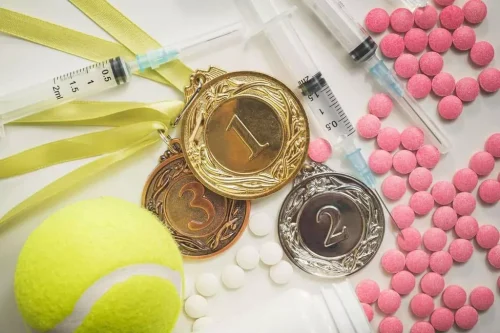Sober living
Debunking 7 Myths about Alcohol Drinking is
In most of the United States, your blood alcohol content (BAC) must be under 0.08% for you to legally drive. A common myth around teens and young adults is that it’s more responsible to give minors alcoholic drinks with adult supervision. This myth is based on the idea that kids will drink anyway, so they might as well be in the presence of a responsible adult. You may have heard myths about alcohol and alcohol use disorder presented as facts. While some myths might be more harmful than others, it’s essential to understand the realities of alcohol and alcohol use disorder. Those who maintain that they can hold their liquor, meaning that they can drink larger amounts with fewer apparent effects, may drink in excess to feel intoxicated.
Ready to make a change?
According to the National Institute on Alcohol Abuse and Alcoholism, women shouldn’t drink more than one drink per day, and men shouldn’t drink more than two drinks per day. Typically, a diagnosis of alcohol use disorder doesn’t require any other type of diagnostic test. There’s a chance your doctor may order blood work to check your liver function if you show signs or symptoms of liver disease.
Common Myths About Alcohol
A higher tolerance for alcohol does not mean the body is impervious to the effect of alcohol; it means that drinkers should be more cautious. Doctors eventually diagnosed her with a rare condition called auto-brewery syndrome. But before that, the 50-year-old had been referred to emergency departments seven times over the course of two years. Each time, her symptoms were similar and made her seem drunk.
Myth 2: A beer before bed helps you sleep
- Heavy drinking can eliminate vitamins and minerals from the body, which can lead to a hangover.
- Many people get a sense that alcohol “takes the edge off.” This happens because of some of the slowing of signals in your nervous system.
- For the rest of us in economy, you don’t have that luxury.
- In addition to the physiological effects, the fallout from drinking is a stress of its own.
- There are many untrue beliefs that people hold about alcohol and how it’s used.
There were so many evenings when my half-hearted resolution to stop drinking would end with the thought, “Tonight will be better if I pick up some beer or wine on my way home.” It takes about 2 hours for the adult body to eliminate the alcohol content of a single drink, depending on your weight. Nothing can speed up this process—not even coffee or cold showers. Problem drinking isn’t about what type of alcohol you drink, nor is it about on which days you drink. If you or someone you love is binge drinking every Friday and Saturday night, it could signal a problem with alcohol.
“Willpower Alone Can Stop An Addiction”

Eventually, doctors discovered that the patient’s medical history held a clue as to what was causing these bouts of drunkenness. Find out where you can get support on the Carers Trust website. Ask a GP or alcohol service about what longer-term support is available in your area. Try to be accurate and honest about how much you drink and any problems it may be causing you. For everyone else though, just drink plenty of water, look for high acidity, go white over red, and if all else fails, maybe stick to orange juice. Of course, there’s a whole world of fanciness up the pointy end of the plane, which if you’re an aspiring wine dork like me will cause intense pangs of jealousy.
Only Time Will Help You Sober Up
While it may seem like those who can knock back several drinks without stumbling are in control, it’s not necessarily a sign of lower alcoholism risk. At high levels of alcohol consumption, quitting without medical support can be life-threatening. Many therapies and medications exist that can help you reach your goals related to alcohol. In truth, alcohol is a drug that should be consumed in moderation, if at all.

That means if you’re looking for decent acidity without the tannins, as per Dixon’s advice, you’re better off drinking white wine over red in the air. A sauvignon blanc is probably going to taste a lot better than a cheap shiraz. But on the flipside, you’ve got 24 hours with nothing to do. You don’t have to be David Boon to feel like a glass of wine or two. That’s not to say that drinking wine with your meal in an Airbus A380 will be the same as knocking back a pinot at Falls Creek because there’s another factor to consider.
National Institute on Alcohol Abuse and Alcoholism (NIAAA)

There also may be a higher likelihood for older people to have mental health conditions that may contribute to excess drinking. Alcohol use disorder is a complex medical condition affecting the brain. It involves an inability to control your alcohol consumption, regardless of its negative effect on your life or health. If someone with alcohol problems also battles depression, their symptoms may worsen when drinking. Similarly, people with anxiety who drink heavily may experience stressful emotions that can cause a change in the stomach’s enzymes, which affects how a person breaks down alcohol.
For information about alcohol use disorder and how to get help, please visit: https://alcoholtreatment.niaaa.nih.gov.
A drink is defined as 12 fluid ounces (355 mL) of beer, 5 fluid ounces (148 mL) of wine, or 1½ fluid ounces (45 mL) of liquor. Drinking this amount or more is considered heavy drinking. Heavy drinking can put you at risk for health problems myths about alcoholism such as heart disease, stroke, liver disease, sleep problems, and some types of cancer. We know much more about the effects of alcohol today than in the past. Learn the facts about alcohol use so you can make healthy decisions.




